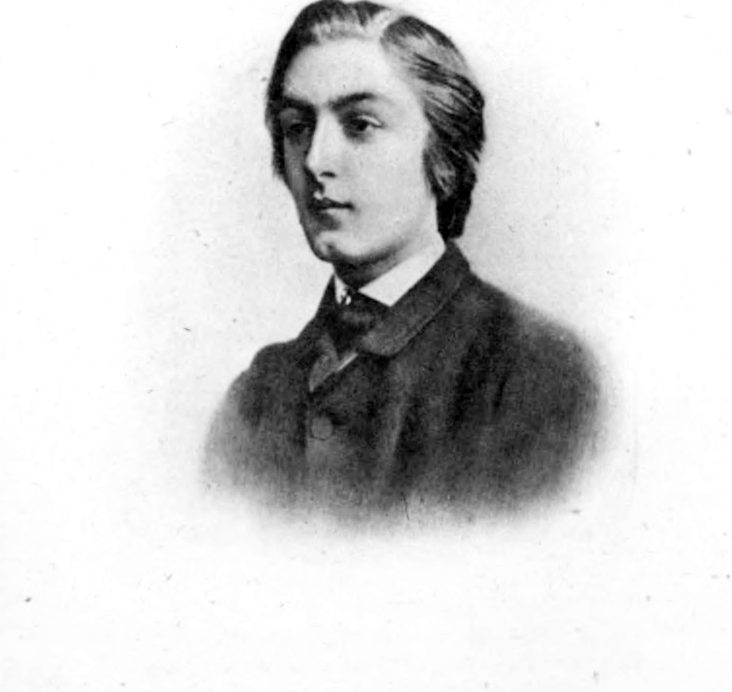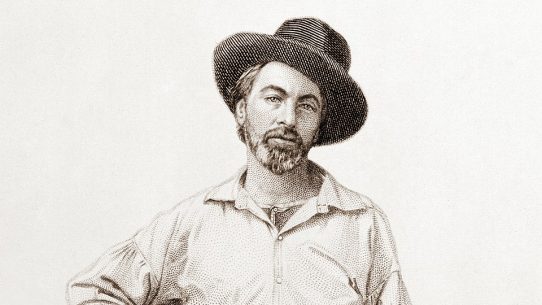Introduction
Gerard Manley Hopkins (1844–1889) was one of the most innovative and spiritually charged poets of the nineteenth century — a voice who redefined the possibilities of language, rhythm, and faith in English verse. Though his work remained largely unknown during his lifetime, Hopkins’s posthumous influence on modern poetry is immense.
A Jesuit priest as well as a poet, he fused intense religious devotion with experimental poetics, forging a style he called “sprung rhythm” to capture the living pulse of natural speech. His work reveals the tension between divine beauty and human despair, between spiritual obedience and artistic expression. Today, Hopkins is recognized as a precursor to modernism, a poet whose originality reshaped how poetry sounds, feels, and believes.
Early Life and Education
Hopkins was born on July 28, 1844, in Stratford, Essex (now part of London), the eldest of nine children in a devout and educated Anglican family. His father, Manley Hopkins, was a marine insurance adjuster and a published poet; his mother, Catherine, instilled in him a lifelong love of music and the Bible.
Hopkins excelled at grammar school and later attended Balliol College, Oxford, where he studied classics under the mentorship of Walter Pater and Benjamin Jowett. At Oxford, he became deeply involved in the Oxford Movement, a religious revival that sought to reconnect Anglicanism with its Catholic roots.
Under the influence of John Henry Newman, Hopkins converted to Roman Catholicism in 1866 — a decision that alienated him from family and friends but defined the rest of his life. Two years later, he joined the Society of Jesus, committing himself to the austere discipline of Jesuit life. During his training, he gave up writing poetry altogether, burning his early manuscripts as an act of humility and renunciation. Yet even in silence, his imagination remained restless, seeking a language worthy of God’s grandeur.
Literary Career and Major Works
Hopkins’s poetic voice reawakened in 1875 after he read about the wreck of the German ship Deutschland, in which five Franciscan nuns drowned while fleeing anti-Catholic persecution. His response, The Wreck of the Deutschland, marked both his return to poetry and the emergence of his mature style. The poem’s bold rhythms, compound words, and spiritual intensity were unlike anything written before — dense, musical, and ecstatic. Although his Jesuit superiors admired his piety, they found his style incomprehensible, and the poem remained unpublished during his lifetime.
Over the next decade, Hopkins wrote a small but extraordinary body of work. His nature poems, including God’s Grandeur, Pied Beauty, and The Windhover, praise the divine vitality in the created world — what he called “inscape,” the unique inner essence of each thing. These poems combine joyful praise with intricate sound patterns, alliteration, and rhythm that mirror natural movement. His later works, such as Carrion Comfort and No Worst, There Is None, express the “dark night of the soul,” exploring spiritual desolation and the absence of God. The sequence known as the “terrible sonnets” confronts doubt and despair with astonishing honesty, yet even in anguish, Hopkins sought the flicker of divine presence.
None of his poems were published during his life. Only after his death did his friend and fellow poet Robert Bridges edit and release Poems of Gerard Manley Hopkins (1918), revealing a visionary modern voice decades ahead of his time.
Style, Themes, and Influence
Hopkins’s poetry revolutionized English prosody. His invention of sprung rhythm — based on varying stress rather than syllable count — freed poetry from the mechanical regularity of traditional meter. This innovation allowed him to mimic natural speech, bird song, and even the pulse of prayer, creating verse that feels both spontaneous and deeply patterned. His language brims with compound formations, internal rhyme, and vivid onomatopoeia, producing a music that fuses the physical and the spiritual.
Thematically, Hopkins’s poetry reflects his intense religious devotion and inner conflict. His concept of “inscape” describes the unique identity of every created thing, while “instress” refers to the divine energy that holds creation together. To perceive these was, for Hopkins, an act of worship — an encounter with God in the material world. Yet his poems also reveal profound tension: the desire for divine communion collides with feelings of isolation and failure. In this, he anticipated the psychological realism of twentieth-century poetry.
Hopkins’s influence can be traced through poets such as T. S. Eliot, W. H. Auden, Dylan Thomas, and Seamus Heaney, all of whom admired his musicality and spiritual depth. His compression of language and radical rhythm foreshadowed the innovations of modernism, while his devotion to faith and beauty gives his work a timeless moral power.
Later Life and Legacy
Hopkins spent much of his priestly career teaching and preaching in parishes and schools throughout England, Scotland, and Ireland. His devotion was sincere, but his temperament often melancholic. In 1884, he was appointed Professor of Greek at University College Dublin, where he experienced deep loneliness and recurring depression. His health deteriorated, yet he continued to write some of his most moving poems, marked by introspection and faith tested by suffering.
Hopkins died of typhoid fever on June 8, 1889, at the age of forty-four. His final words reportedly were, “I am so happy, I am so happy,” a testament to the serenity he found in the end. When Poems of Gerard Manley Hopkins was finally published in 1918, readers were stunned by its originality. Critics recognized that Hopkins had reinvented the English lyric — his language, rhythm, and imagery opening new possibilities for poetic expression. Today, he is celebrated as one of the founders of modern poetry, a bridge between Victorian faith and modernist form, whose work continues to speak to readers seeking transcendence through art.
Notable Works
The Wreck of the Deutschland (1875)
God’s Grandeur (1877)
Pied Beauty (1877)
The Windhover (1877)
Carrion Comfort (1885–87)
No Worst, There Is None (1885–87)
Poems of Gerard Manley Hopkins (1918, posthumous collection)



